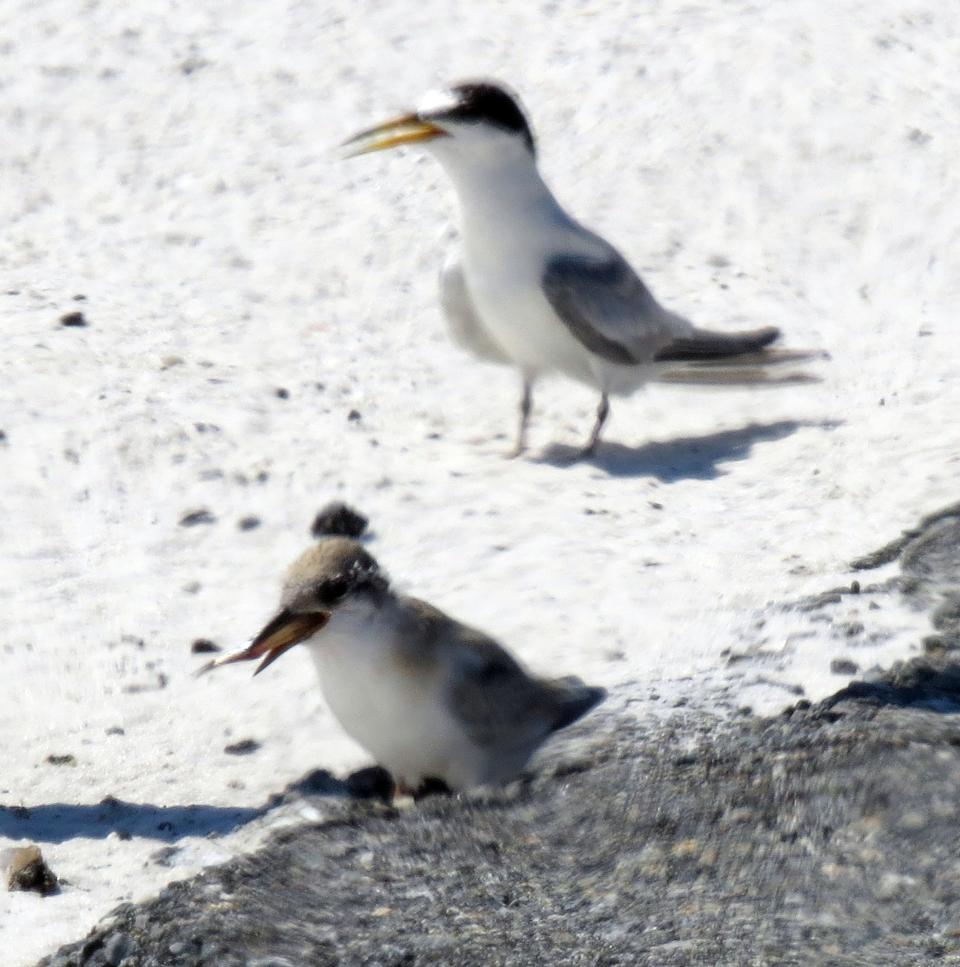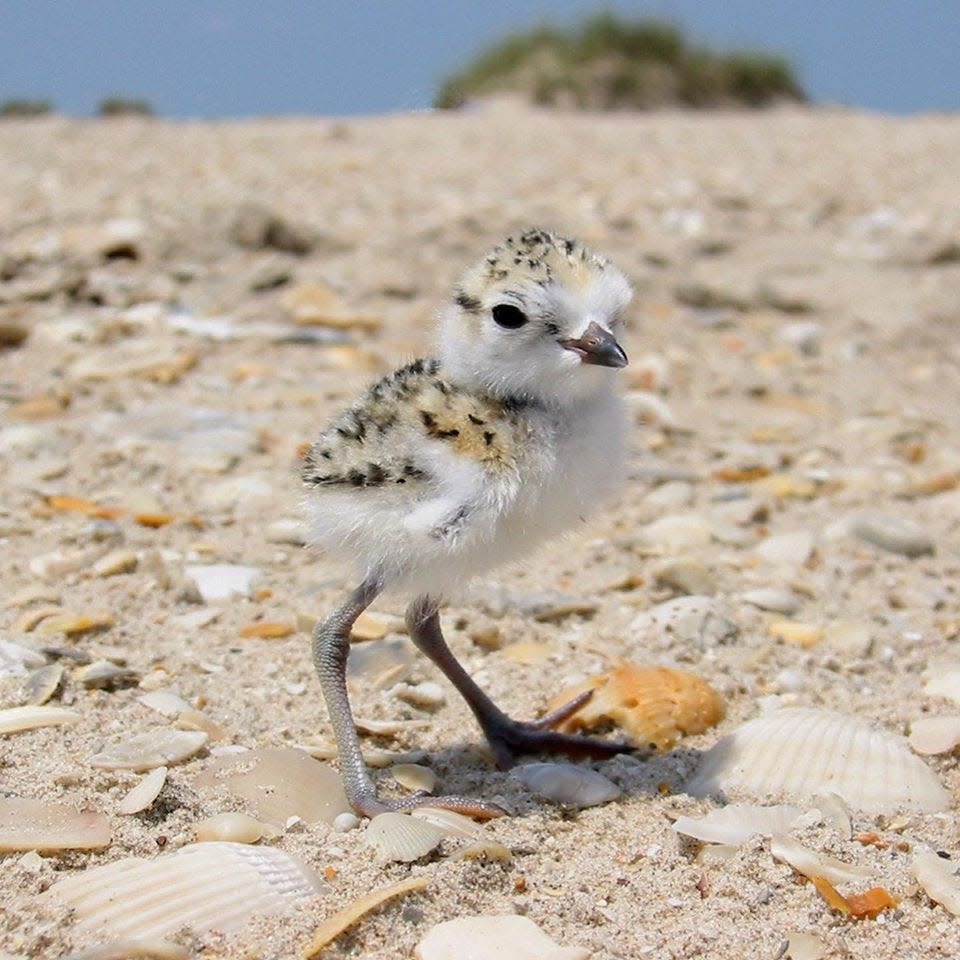Keep shorebirds safe at Pensacola Beach this nesting season. Here's how you can help
Each spring, signs cautioning motorists to slow down and be on the lookout for shorebirds line roads along Pensacola Beach.
During nesting season, driving slowly is important to avoid hitting newly hatched chicks.
Want to learn more about Pensacola Beach’s shorebirds? Here’s everything to get started.
What are shorebirds?
The term shorebird was given to a group of small birds usually found wandering around shorelines where they forage for food and nest.
There are about 210 species of shorebirds around the world, but the birds that call Pensacola Beach home are a smaller group.
Most popular shorebirds at Pensacola Beach
Least terns

Least terns migrate all the way from South America to breed along Pensacola Beach, though they are known to fly up the Atlantic Coast as far north as Maine.
The National Park Service says that least terns come to the national seashore to nest in colonies, though they sometimes nest in isolated pairs, as well.
Courtship involves the presentation of food or food-life objects to a female along with a variety of posture and vocalizations.
Least terns are the smallest of terns, measuring around 8 to 9 inches in most cases. They have a signature black “crown” on their head and a snowy white underside and forehead.
Snowy plovers

Snow plovers are small, snowy white shorebirds that can be easy to miss as they blend right in with Pensacola Beach’s sandy white shores. These little guys eat clams, crabs, sand hoppers, seeds and marine worms, according to the NPS.
Many plovers protect their nests using displays to distract curious onlookers. When a parent snowy plover thinks its nest is in danger, it will intentionally attract an intruder’s attention to lure it away from the nest.
Young, snowy plovers typically leave their nest within three hours of hatching.
Wilson’s plovers
Wilson's plovers migrate to Pensacola Beach from South Florida. They're slightly larger than their relatives, and have moderately long legs, brown backs and white underparts.
These plovers come to Pensacola Beach in either pairs or loose colonies, according to NPS. In courtship, the male makes multiple nest-scrapes and the female choses one. Nests are extremely hard to see, which wilson's plovers use as a defense mechanism.
Black skimmers
Black skimmers are common birds found around Pensacola Beach. These can be identified by their thin bill, which has an orange base and black tip.
These birds are monogamous, so they mate with the same partner each season. They nest in colonies close to the water. They lay their eggs in the sand, which attracts predators like seagulls and raccoons. Human activity can also disturb nests.
Female black skimmers typically lay between four and five eggs at a time, and their black spots can identify them. Partners take turns incubating the eggs, which hatch between 22 and 24 days.
Shorebird safety tips
Slow down while driving during nesting season, which lasts from March through August. Adult birds and their tiny chicks are sometimes hit by vehicles as they wander onto or fly across roadways.
Never chase shorebirds that are on the beach. Forcing them to run or fly compels them to use valuable energy needed for nesting. Unattended eggs and chicks are vulnerable to the sun’s heat or to predators nearby, watching and waiting for a snack.
Pay attention to all posted shorebird/seabird signs and roped off areas. Use designated walkways when available so you don’t disturb the birds and their families.
Dogs are only allowed within the designated dog beach areas and must remain on leash.
Do not fly kites, throw balls or explode fireworks near areas where birds may be nesting because they are frightening when airborne and tend to crash in unpredictable places at unpredictable times.
Keep your distance from nesting birds. If you notice birds squawking and dive-bombing you, it's probably a sign that you're too close. A general rule is to stay at least 100 yards away from a nest. If you are being dive-bombed, retreat by slowly retracing your steps – and watch where you put your feet.
Leave only your footprints behind. Please keep the beach clean (even if this means you are picking up after someone else) and do not feed wildlife. Beach litter endangers wildlife and food scraps are smelly and both attract predators that then will prey on shorebird chicks or eggs.
This article originally appeared on Pensacola News Journal: Shorebird nesting season at Pensacola Beach: Here's what to know

